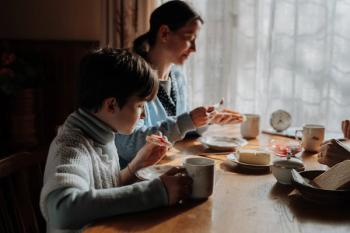
Technology, Home Infusion, Communication in Future of Community Oncology
The current state of oncology is shaping challenges for the future specifically in the areas of telehealth, home infusions, and a surge of new patients that have not been to oncology clinics yet.
There are many challenges ahead for the community oncology landscape, including adjusting to technological ways of communicating with patients and remodeling financial risk models, according to a session at the virtual COA 2020 (Community Oncology Alliance)
The “Top Community Oncology Issues” session featured moderator Bo Gamble, Director of Strategic Practice Initiatives , COA, and speakers Barry Russo, MBA, CEO, The Center for Cancer & Blood Disorders; Kelly Oubre, MS, COO, Pontchartain Cancer Center; and Robert Braun, Corporate VP Operations and Integration, Regional Cancer Care Associates LLC.
According to Oubre, the current state of oncology is shaping challenges for the future specifically in the areas of telehealth, home infusions, and a surge of new patients that have not been to oncology clinics yet.
In addition to adjusting to the new ways of telehealth and home infusion, Oubre emphasized the importance of those who have not been to an oncology center who may have to go after the pandemic.
“There is a whole population of symptomatic patients seeking initial care due to [the coronavirus disease 2019] COVID-19,” Oubre said. “By the time they see an oncologist, they may have a disease. There is a great opportunity to learn from this.”
Braun added to these statements on the need for organizations, like COA, to help “navigate the waters” surrounding stable practice, service to patients, and moving forward after the pandemic. Further, he noted how financial risk models are an uncharted territory at this point.
“We need to look at potential remodeling of our financials and what it may look like with a resurgence of patients,” Braun said. “Staffing becomes affected, the supply chain, access to the right drugs, PPE, and more. Oncology practices are advised to look ahead at what possibilities are available.”
Russo mentioned the ability that both patients and health care professionals have to adapt quickly to using new systems, scheduling, FaceTime, and more.
“Patients can adapt quickly, so we have to adopt how we interact in an electronic world, and how we restructure in a value-based world in a much more frequent basis, but in a way that takes into account social distancing,” said Russo.
In terms of the current state of oncology and oncologists’ roles in being a major part of the care journey, Oubre added that although telehealth is immensely helping patients, we cannot forget the subset of patients who cannot access the internet or struggle with using the internet.
“Be mindful of that population who may not have this type of access or use older technology,” Oubre said.
In 5 years from now, Russo hopes that patient interaction will be more frequent and very technology-based, while trying to still connect all the pieces of the longitudinal journey.
“The longitudinal journey of the patient is a village, and we have all the village members communicating and connecting in a way,” Russo said. “That will make a big difference in the healing process and how we take care of patients, forcing us into different electronic environments.”
REFERENCE
Gamble B, Russo B, Oubre K, Braun R. Top Community Oncology Issues. Presented at: COA 2020 Community Oncology Conference 2020. April 23, 2020.
Newsletter
Stay informed on drug updates, treatment guidelines, and pharmacy practice trends—subscribe to Pharmacy Times for weekly clinical insights.














































































































































































































